Biolaminin 121 LN (LN121)
Full-length human recombinant laminin-121
Biolaminin 121 is a full-length human laminin-121 protein that can be used as a general attachment protein for many cell types in vitro—particularly for hepatic and neural differentiation and to enhance neurite outgrowth.
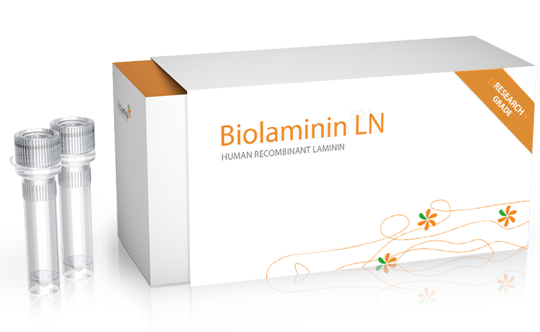
A defined culture substrate for many cell types
Laminins 111 and 121 are widely expressed during embryogenesis and are important for early epithelial development and differentiation of the epiblast. Laminins induce different cell signaling cascades and co-signal with various growth factors in a cell-type-dependent manner. Biolaminin 121 LN (LN121-02 and LN121-0501) can support the survival, proliferation, and differentiation of many different cell types in vitro.
Learn more about full-length laminins
Improved neurite outgrowth and postsynaptic myotubes
Laminin 121 has a higher affinity to integrin receptors compared to laminin-111, especially to integrins α7β1 and α6β1 (Sasaki, 2010). Laminin 121 has been shown to be especially supportive to neurite outgrowth (Sasaki, 2010). Human myotubes cultured on a combination of Biolaminin-121 and -221 were also shown to have the most developed clusters of postsynaptic machinery (Pęziński, 2020).
Recommended applications
-
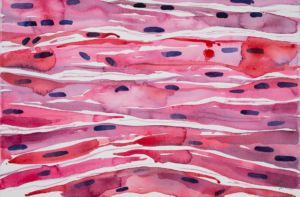
Skeletal muscle cells
Biorelevant culture of muscle cells on Biolaminin substrates Laminin 211, 221 and 521 form an important part of the adult skeletal muscle microenvironment Laminin […]View application -
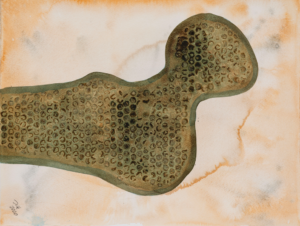
Bone and cartilage cells
Biorelevant culture of bone and cartilage cells on Biolaminin substrates High expression of laminin isoforms in the bone microenvironment Bone cells, including include […]View application -
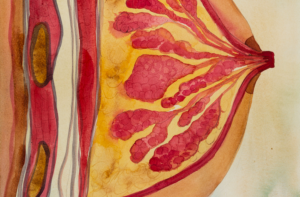
Mammary gland cells
Biorelevant culture of human mammary cells on Biolaminin substrates Laminins have both overlapping and unique functions in the mammary gland tissue Mammary […]View application -
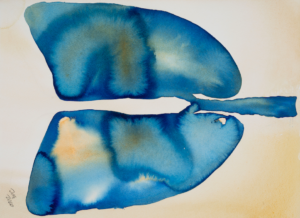
Lung cells
Biorelevant culture of lung cells on Biolaminin substrates Laminin expression in lung Laminin is key proteins in the basement membranes of the airway […]View application -
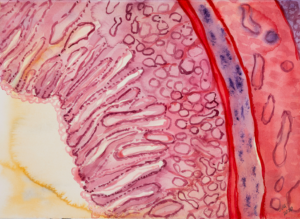
Intestinal cells
Biorelevant culture of intestinal cells on Biolaminin substrates Laminin expression in the intestine The small intestine contains mucosal epithelial invaginations called […]View application -
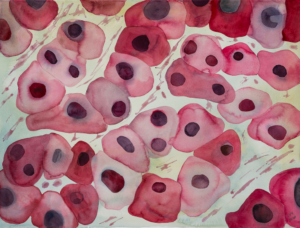
Hepatocytes and hepatoblasts
Biorelevant culture of liver cells on Biolaminin substrates Several laminins play a vital role in liver progenitor cell-mediated regeneration The […]View application
Key features
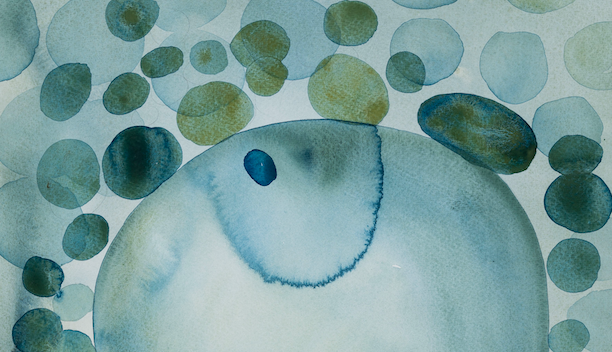
Coating plates
1. Thaw recombinant laminins slowly at +4°C before use.
2. Dilute the thawed laminin stock solution with 1x DPBS.
3. Add the diluted laminin solution to tissue culture-treated surfaces, aiming for a final coating concentration of 0.5-2 µg/cm². The optimal coating concentration may vary depending on the specific cell line.
4. Seal the plate (e.g., with Parafilm®) to prevent evaporation, and incubate at +2°C to +8°C overnight. For faster coating, incubate at +37°C for 2 hours. Ensure the laminin solution is evenly distributed across the surface. Note that the laminin matrix will become inactivated if allowed to dry.
Important notes
Preparation and handling
- Perform all procedures under sterile conditions using aseptic techniques.
- Minimize exposure of the protein to ambient temperatures.
Storage and stability
Laminin stock solution storage
- Store the frozen laminin stock solution at -20°C to -80°C for long-term stability. Refer to the product-specific Certificate of Analysis (CoA) for detailed shelf-life information.
- Avoid repeated freeze-thaw cycles.
- For long-term storage of thawed stock solution, dispense into working aliquots and store at -30°C to -80°C. Thawed, undiluted Biolaminin stock remains stable for 3 months at +2°C to +8°C.
Coated plate storage
- Store coated plates aseptically at +2°C to +8°C for up to 4 weeks. Do not let the surface dry.
Cell culture setup
- Use appropriate culture media and dissociation reagents to create fully defined, animal component-free protocols.
- Ensure high-quality cells when transferring to the Biolaminin matrix.
- When moving your cells from another feeder-free matrix (e.g., Matrigel), we recommend starting with a smaller well format (e.g., 96-well or 48-well format) and a higher seeding density for the first few passages. This allows the cells to adapt to the laminin matrix before increasing the culture well format and lowering the seeding density.
Troubleshooting Guide
Biolaminin plate coating
Uneven cell spread is often a coating issue and may be caused by:
- Low coating concentration: Ensure the laminin coating concentration is high enough to support even cell growth. Increase the concentration if necessary.
Poor coating coverage or plate drying: Confirm that the entire surface is covered with the laminin coating solution when preparing fresh plates. Avoid drying out the plate, as this will inactivate the laminin. Prolonged time in the incubator or long storage without proper sealing can cause evaporation, leading to localized drying, often in the center of the plate.
Product name
Biolaminin 121 LN
Product code
LN121
Declaration
For research use only
Storage
-20°C to -80°C
Concentration
0.1 mg/ml
Appearance
Clear, colorless, buffered solution with a
pH of 7.2 with 10% glycerol and 0.02% NaN3
Shipping condition
Dry Ice
Protein name
Laminin 121 (Laminin-3)
Classification
Animal origin-free, human recombinant protein
Product application
General cell culture substrate. Can be found in the placenta, skeletal muscles, and kidneys.
Laminin 121 – recombinant expression and interactions with integrins
Sasaki T., Takagi J., Giudici C., Yamada Y., Arikawa-Hirasawa E., Deutzmann R., Timpl R., Sonnenberg A., Bächinger H.P., Tongeh D.
Matrix Biol., 2010
An improved method for culturing myotubes on laminins for the robust clustering of postsynaptic machinery
Marcin Pęziński, Patrycja Daszczuk, Bhola Shankar Pradhan, Hanns Lochmüller, Tomasz J Prószyński
Scientific Reports, 2020
Size guide
Not sure how much laminin you need? To make it easy, we have created a tool where you can calculate the amount needed for your experiments. Just choose culture well format and fill in the desired coating concentration to see the amount required.
Please see the coating instructions for concentration and volume guidelines.